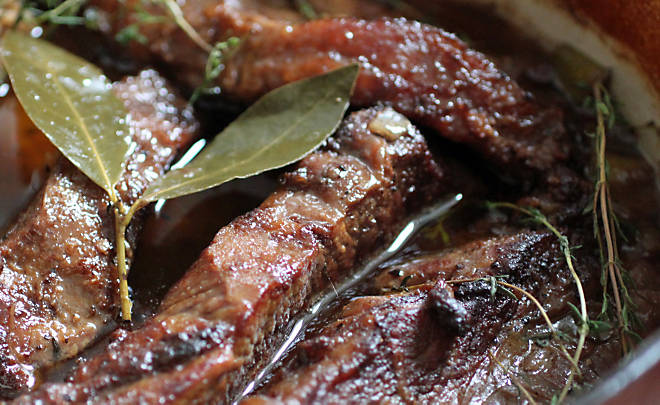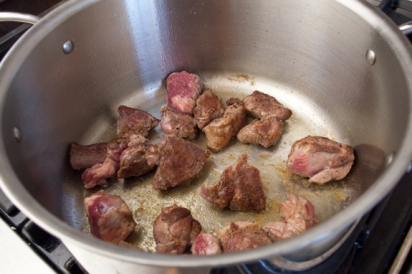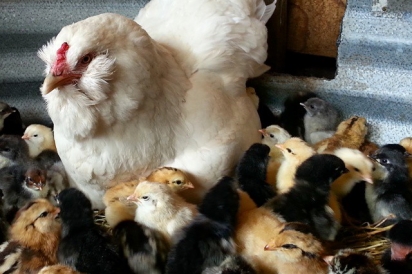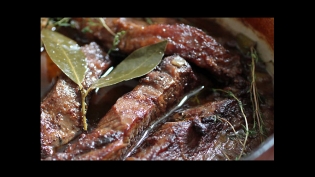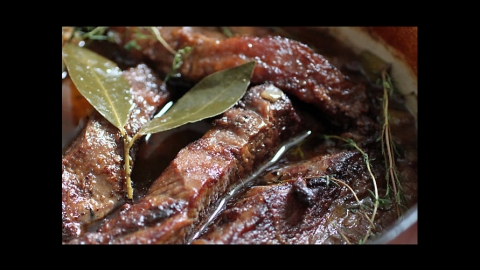IN PRAISE OF BRAISING
Tender, fall-off-the-bone meat is always welcome in my book, especially when we’re mid-Snowpacalypse. Happily, the Roaring Fork Valley has a handful of acclaimed producers of humanely-raised livestock (many of which are heritage breeds), so high-quality pork, beef, lamb, rabbit, and poultry are plentiful and available through ranch stores and meat shares (where the consumer purchased a portion of, or the whole animal).
Lean or tough “working” muscle cuts like shoulder, chuck, brisket, and shank are ideal for low, slow cooking methods like braising. The same is true of grassfed beef, which has less marbling than animals finished on grain. Braising is a combination cooking method that uses both moist and dry heat. The meat must first be seasoned and seared, which seals in juices and adds flavor; the pot is then deglazed, and the meat and aromatics and other ingredients including liquid (which acts as a tenderizing agent and breaks down the tough protein strands) are added. This second step can be done on the stovetop or in the oven.
I love braises for their simplicity—they’re best made a day ahead and they require little attendance after the ingredients are combined—but the end result is a rich, complex, dish that’s nourishing as well as nurturing. I prefer to serve braised meat with a simple green salad and hunks of crusty bread, but you can also ladle them atop buttered noodles (try a wide variety like pappardelle), or with boiled or roasted potatoes, polenta, or grains. Look for cuts like lamb or beef shanks, oxtail, pork shoulder or butt, beef brisket, chuck or short ribs, or poultry or rabbit (the technique for breaking down a whole chicken, right here).
If you’re looking to buy into a meat share, ACES at Rock Bottom Ranch in Basalt raises heritage breed pigs (the Large Black and Tamworth breeds, which are listed as critically endangered and threatened, respectively, on the National Livestock Conservancy website), and also pasture-raised poultry. Call 970.927.6760 or email rockbottom@aspennature.org for details.
Carbondale’s Sustainable Settings sells soup hens (older laying hens, ideal for stewing or soup stock), turkeys, and pasture-raised pork from their farm store, and Basalt’s Mountain Primal Meat Co. has Berkshire pork and American Highlands grassfed beef, available direct from their ranch. Merrill’s Family Farm, also in Carbondale, sells whole and half-hog shares of their pasture-raised Large Black hogs, as well as live meat rabbits.
From one of my most treasured cookbooks comes this simple, homey recipe. Feel free to substitute rabbit or pork shoulder. Hesser suggests serving it with potatoes mashed with butter and cream.
Recipe from The Cook and the Gardner, by Amanda Hesser (Norton)


